LED Grow Light Placement
Understanding LED Grow Light Placement is pivotal for indoor plant enthusiasts and commercial growers alike. This seemingly trivial factor can make a significant difference in the growth, yield, and overall health of your plants.
LED grow lights, with their energy efficiency and spectrum versatility, have revolutionized indoor gardening. However, without proper placement, even the most advanced LED lights may fall short of their potential. This guide will help you navigate the intricacies of LED grow light placement, ensuring your plants receive the right amount of light at the right time.
So, get ready to delve into a topic that's as illuminating for your indoor garden as it's crucial. Discover how the correct LED grow light placement can unlock the full potential of your indoor plants.
Importance of Proper Light Placement in Indoor Gardening
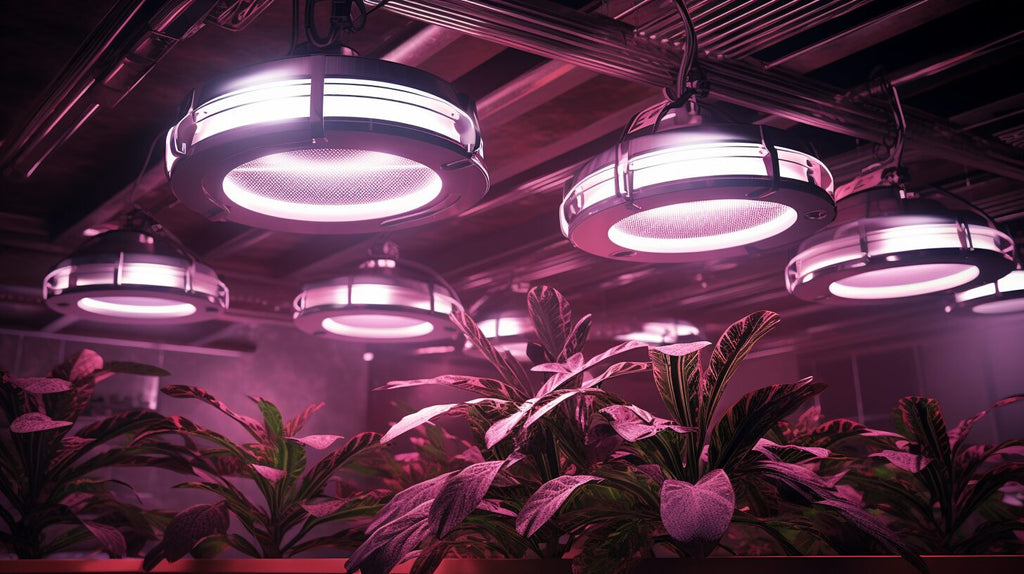
-
Optimal Plant Growth: Proper light placement ensures that your plants receive balanced light exposure, which is crucial for photosynthesis and, by extension, their growth and development.
-
Avoidance of Plant Damage: Incorrect placement can lead to problems such as light burn. The light is too intense for the plant to handle, causing damage to its leaves and hindering its overall health.
-
Energy Efficiency: Well-planned light placement can effectively cover more plants using less energy, making your gardening efforts more sustainable and cost-effective.
-
Uniformity in Growth: Proper distribution of light helps maintain uniformity among plants, ensuring that all plants receive the essential amount of light they need to grow.
-
Enhanced Flowering and Harvest: Correct light placement can significantly improve the flowering and fruiting of plants. This leads to a more bountiful harvest.
Understanding Light Spectrum for Indoor Plants
Plants are not just absorbing sunlight. They use different wavelengths of light for various biological processes. The light spectrum refers to the range of colors that constitute sunlight. It is categorized into different segments: ultraviolet, blue, green, red, and far-red. Each spectrum has its distinct impact on plant growth.
| Ultraviolet light (100-400 nm) | Though often less considered in plant growth, some studies suggest that it can influence plant development and immune response. |
| Blue light (400-500 nm) | This part of the spectrum is essential for regulating plant growth, as it encourages strong roots and the dense growth of leaves. |
| Green light (500-600 nm) | While plants primarily reflect green light, making them appear green, a portion of it is absorbed and can influence plant morphology. |
| Red light (600-700 nm) | Red light is a key driver of photosynthesis, promoting leaf expansion and the flowering stage. |
| Far-red light (700-800 nm) | Though not directly used in photosynthesis, far-red light can impact other light-dependent processes, including germination and flowering. |
- Mars Hydro TSL 2000 Full Spectrum Grow Light
- Mars Hydro TS 1000 Full Spectrum Grow Light
- AC Infinity Ionbeam U4, Targeted Spectrum UV Led Grow Light Bars
- AC Infinity IonFrame EVO8 LED Grow Light 730W
- Gavita Pro 1700e LED Grow Light
LED Grow Light Distance
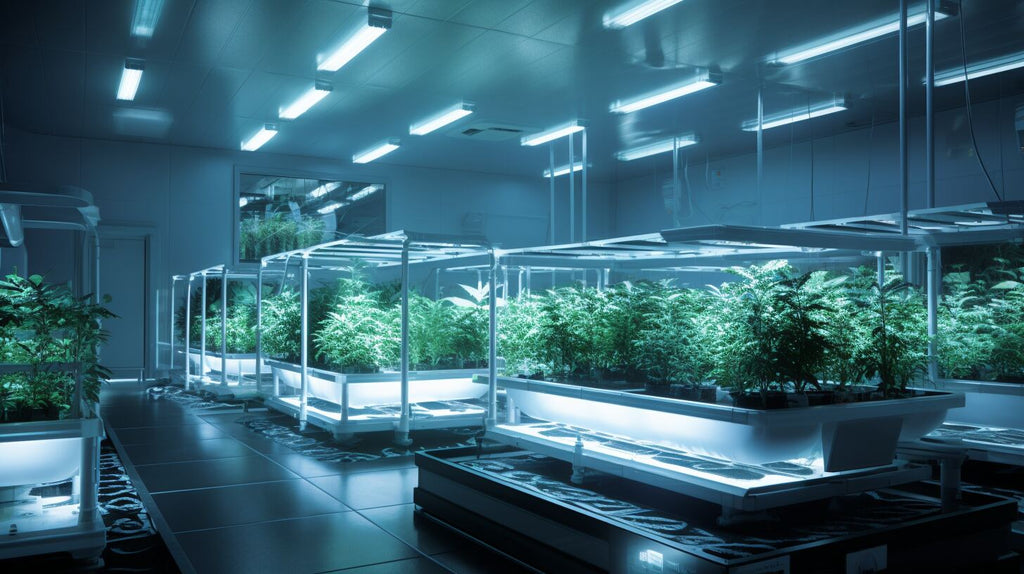
Just as the light spectrum plays a fundamental role in plant growth, so does the distance at which grow lights are placed from your plants. Determining the optimal distance is vital for indoor plant health and productivity.
How Far Should LED Grow Lights Be from Plants?
The distance between LED grow lights and your plants heavily depends on the wattage of the light. Here's a general guideline:
-
High-Intensity Lights (600-800 watts): These should be kept around 30-36 inches away from the top of the plant canopy. This distance is crucial to prevent light burn as these lights emit a significant amount of heat.
-
Medium Intensity Lights (400-599 watts): A distance of 24-26 inches is recommended for this range of lights. This allows sufficient light energy to reach the plants without causing heat damage.
-
Low-Intensity Lights (200-399 watts): Lower-intensity lights can be placed closer, around 12-19 inches away, as they produce less heat. But remember, they also provide less coverage, so adjust accordingly.
Read More: Best Led Grow Lights
Different Distances for Different Growth Stages
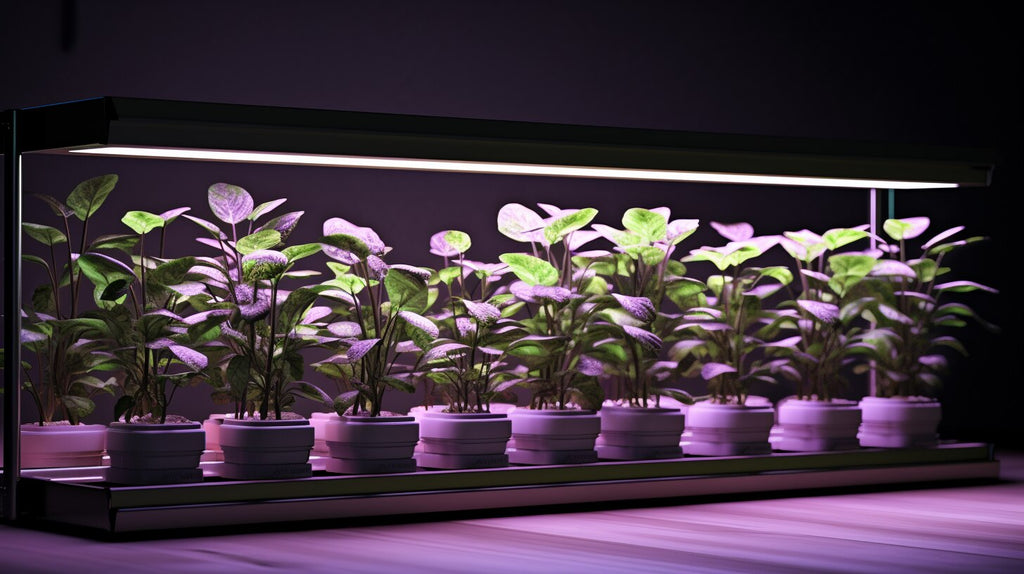
The different stages of plant development require different light intensities. Depending on the growth stage, you may need to adjust the distance from plant to the LED grow light to ensure optimal growth.
-
Seedling Stage (10-30 watts): At this stage, plants are very young and delicate. The lights should be placed about 24-36 inches away to avoid overwhelming the seedlings with light intensity.
-
Vegetative Stage (30-50 watts): As plants mature into their vegetative stage, they can handle a bit more light. Place your lights 15-24 inches away to encourage healthy and robust growth.
-
Flowering Stage (50-80 watts): This is when plants need the most light to help with flowering and fruit production. A distance of 12-24 inches is recommended, but remember, the higher the light intensity, the further away it should be to prevent light burn.
These brands offer high-quality LED grow lights, recognized for their adjustability throughout different growth stages. These brands deliver the versatility and customization needed for indoor gardening, ensuring optimal light settings for the seedling, vegetative, and flowering stages.
Signs Your Plants are Too Close or Too Far from the Lights
Observing your plants closely can provide valuable insights. You can see if your LED grow lights are positioned correctly.
Signs Your Plants are Too Close to the Lights:
-
Light Burn: Symptoms of light burn include yellow or brown discoloration on the tops of leaves and, in severe cases, curling or wilting.
-
Stunted Growth: If you notice that your plants are not growing as they should, it could be because the lights are too close. The excessive intensity can stunt the plant's growth and even cause it to stop growing entirely.
Signs Your Plants are Too Far from the Lights:
-
Leggy Plants: If your plants are stretching or growing tall and thin with large spaces between leaves, this is known as becoming 'leggy.' It is a common sign that the plants are too far from the light and are stretching to reach it.
-
Slow Growth: Stunted growth is caused by lights being too close. Slow growth due to lights being too far away is characterized by the plant growing at a much slower rate than normal. This is because it isn't receiving enough light to carry out photosynthesis effectively.
By paying attention to these signs, you can adjust your light placement as needed to ensure your indoor garden thrives.
Read More: What's The Difference Between LED Lights And LED Grow Lights?
Optimizing LED Grow Light Coverage for Maximum Growth
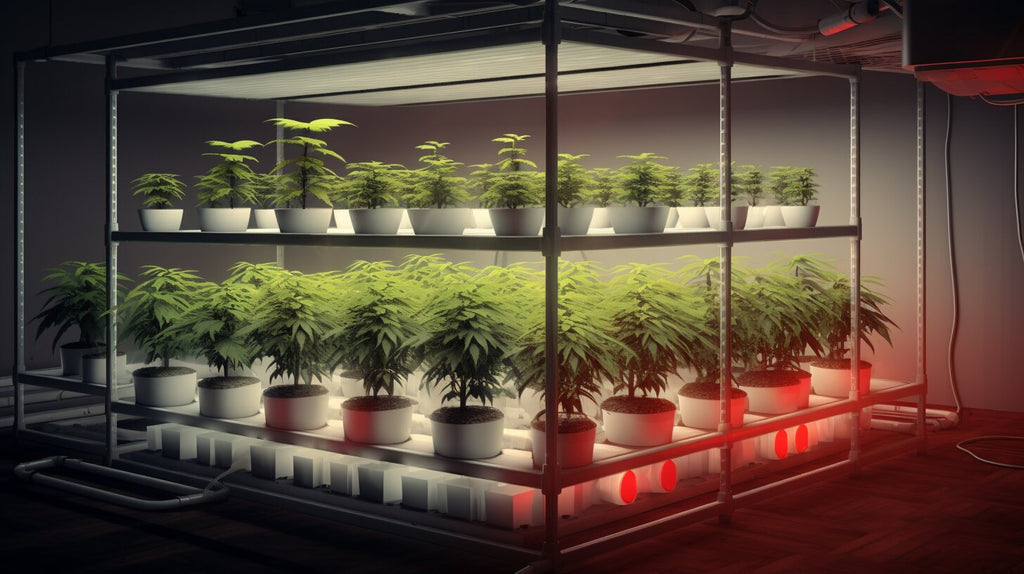
Optimizing the coverage of LED grow lights is crucial. It ensures every plant receives the necessary light for photosynthesis.
Calculating Required Light Coverage for Your Indoor Garden
To calculate the required light coverage for your indoor garden, you first need to assess the area of your grow space. This can be done by multiplying the length and width of your grow area in feet. For instance, if you have a grow tent that's 4 feet long and 4 feet wide, your total grow space is 16 square feet (4x4).
Once you have the area of your grow space, the next step is to identify the correct amount of light needed per square foot. For most plants, a good rule of thumb is to aim for 32 watts of actual power per square foot for LED grow lights. This means for a 16-square-foot grow area, you'd need an LED to grow light with an actual power draw of 512 watts (16x32).
Remember that these calculations provide a general guideline. Depending on the specific plants you are growing and their light requirements, you may need to adjust accordingly. Taking the time to calculate the proper light coverage will ensure your plants receive enough light. This promotes healthier growth and higher yields in your indoor garden.
Positioning Your Lights for Uniform Light Distribution

Uniform light distribution is essential in indoor gardening. It promotes balanced growth across all plants. Effective positioning of your LED grow lights will help achieve this uniformity. Here are some tips to consider:
-
Use a Light Meter: A light meter is a handy tool that measures the light intensity at any given point. By using a light meter, you can quantify the level of light each plant is receiving and adjust the position of your lights accordingly.
-
Adjust Light Angles: Some growers find success by angling their lights slightly to distribute light more evenly across their indoor garden. However, be cautious not to angle the lights so much that it reduces the light reaching the plants directly beneath.
-
Light Movers: Consider using light movers, devices that move the lights slowly over a set path, to help distribute light evenly. They prevent the creation of overly intense hot spots and allow the light to reach different areas of the plants.
Remember, uniform light distribution ensures that all plants receive enough light. It also helps to prevent issues like light burn or slow growth. So, spend some time positioning your lights correctly for the benefit of your entire indoor garden.
Read More: How Far Should LED Grow Lights Be From Plants?
Regularly Adjusting Light Placement as Plants Grow
Adjusting the placement of your LED grow lights as your plants grow is a crucial aspect of managing an indoor garden. As plants progress through various growth stages, their light requirements change.
Early in the vegetative stage, when plants are small, the lights can be positioned relatively close to the plant canopy. There's no risk of light burn. As the plants grow taller, raise the lights to maintain the ideal distance. Ensure that all leaves receive ample light without overheating.
During the flowering stage, plants will typically stretch and grow significantly. React to this growth by raising the lights, but remember the plants' increased light requirements during this stage. Maintain a balance between providing enough light for flowering and avoiding light burn.
Monitoring your plants for signs of light stress is key. Yellowing or curling leaves can indicate that lights are too close. Thin, stretched-out plants can indicate the lights are too far away. Regularly adjusting your lights as your plants grow will help optimize their health and yield.
Common Mistakes in Light Placement
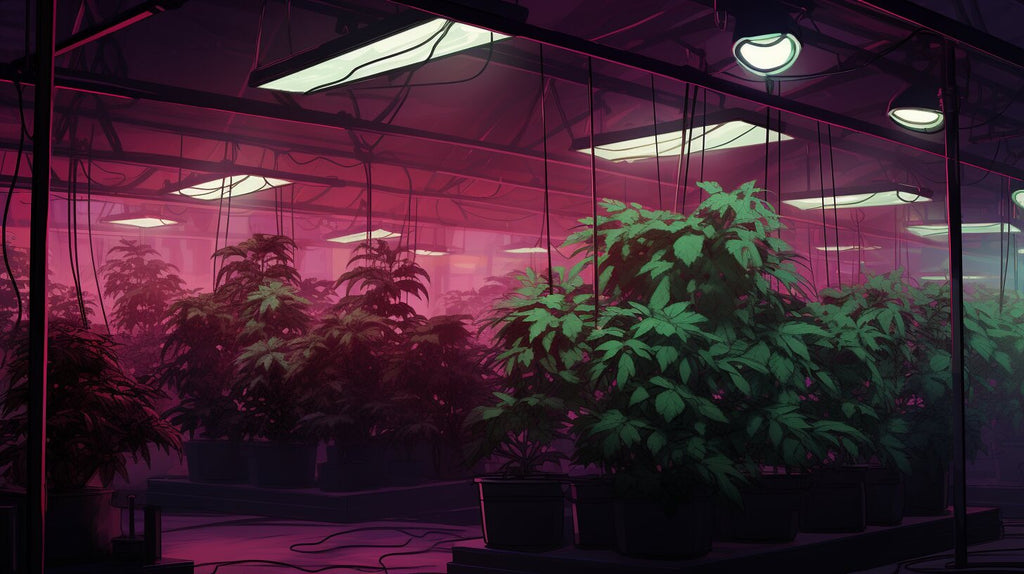
When setting up indoor gardens, even the most experienced growers can make mistakes in light placement. Recognizing these common issues can help you avoid them in your own setup.
-
Constant Light Height: One frequent mistake is keeping the lights at a constant height throughout the plant's lifecycle. As plants grow, their light needs change. Adjust the distance between the light source and the plant canopy accordingly.
-
Ignoring Light Penetration: Another common error is underestimating the importance of light penetration. Placing lights too high can result in weak, 'leggy' growth, as the light intensity decreases significantly with distance.
-
Overcrowding of Lights: It's also a mistake to overcrowd lights with the aim of providing more light to your plants. Excessive light can lead to light burn and can severely stress your plants, reducing overall health and yield.
-
Neglecting Side Lighting: While overhead lights are crucial, neglecting side lighting is a common mistake. Side lights can ensure light reaches lower leaves, leading to a more uniform and robust plant growth.
-
Inadequate Light Coverage: Lastly, inadequate light coverage in the grow area can result in plants on the periphery not getting enough light. This can lead to poor growth. Ensure that light is evenly distributed across all plants.
Avoid these mistakes to optimize light placement in your indoor garden. Doing so can improve plant health and yields.
Frequently Asked Questions
Where do you put LED grow lights?
LED grow lights should be placed at an appropriate height above the plants in your indoor garden. The exact height can vary depending on the plant species and growth stage. It's essential to maintain a safe distance to prevent light burn. Use your light's manufacturer recommendations as a starting point. Adjust as needed based on plant health and growth.
How far away should my LED grow light be?
The distance between your LED grow light and plants depends on the light's wattage. It also depends on the plants' growth stage. For high-wattage lights, you'll want at least 30-45 cm of space between the plant and the light. For smaller wattage lights, 15-30 cm should suffice. Always monitor plant response and adjust as necessary.
How should I position my grow lights?
Position grow lights to evenly distribute light across all plants in your indoor garden. To achieve this, you can angle the lights slightly or use light movers, but always be sure to avoid light burn or slow growth. Remember to adjust the light positioning as your plants grow and their light needs change.
How far should LED grow lights be from tomato plants?
During the vegetative stage, LED grow lights should be positioned about 60-90 cm away from tomato plants. This helps to prevent light burn. As the plants mature and reach the flowering stage, you can reduce this distance to around 45 cm. This provides ample light for fruiting while still preventing overheating. Always monitor the plant's response and adjust the light distance as necessary.
Conclusion
Mastering the placement and adjustment of LED grow lights in your indoor garden is fundamental to ensuring optimal plant health and yield, and understanding that light requirement varies across different growth stages and plant species is crucial.
Avoid common mistakes such as maintaining constant light height or neglecting side lighting. This can significantly improve your indoor gardening success. Whether you're growing juicy tomatoes or exotic herbs, our store offers a wide range of LED grow lights. This lets you choose the best one for your needs.
Remember, the key to successful indoor gardening lies in the delicate balance. You need to provide enough light for healthy growth. Avoid causing light burns. Happy Gardening!








